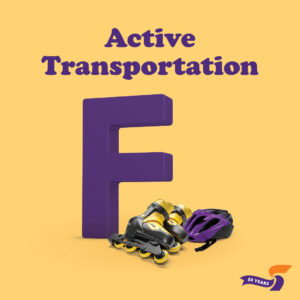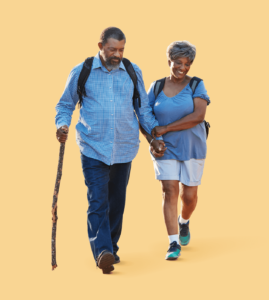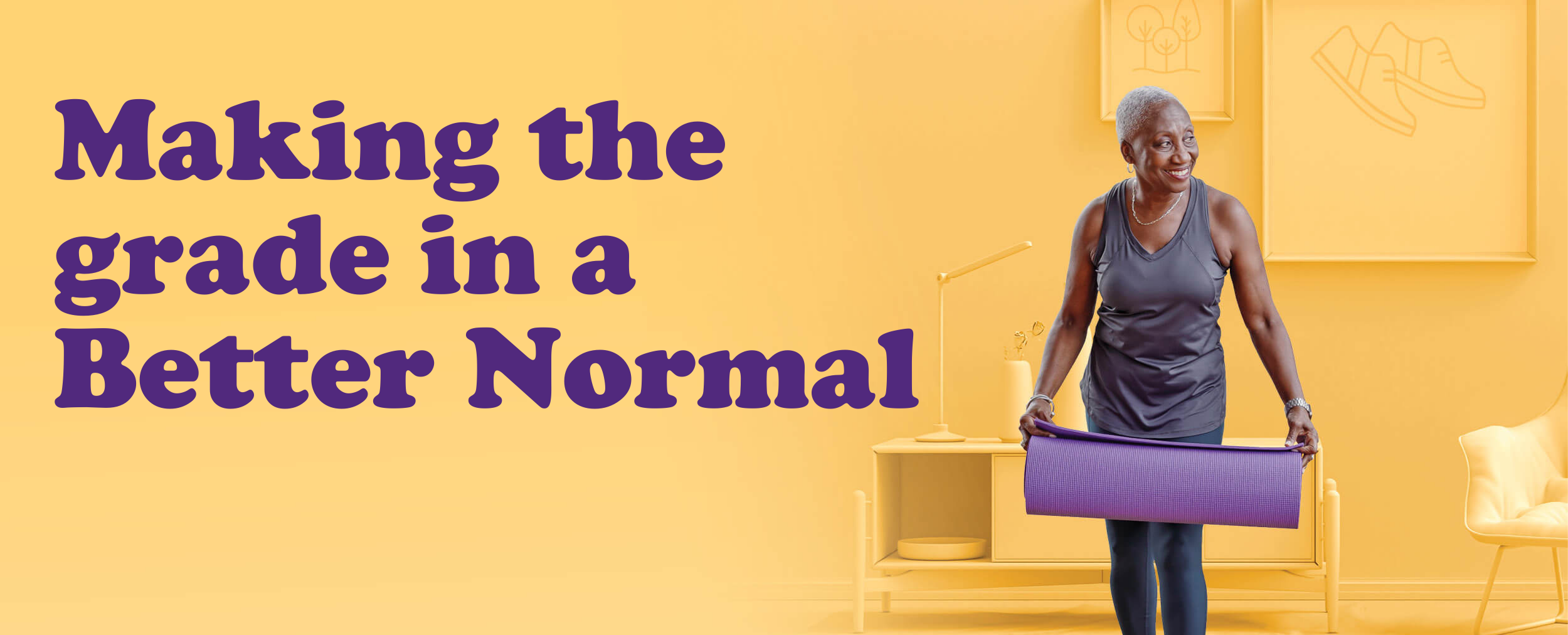 DR. LEIGH VANDERLOO
DR. LEIGH VANDERLOO
SCIENTIFIC DIRECTOR, PARTICIPACTION
On November 30, we launched the 2021 ParticipACTION Report Card on Physical Activity for Adults. Since then, we had a chance to speak with Dr. Leigh Vanderloo, Scientific Director at ParticipACTION, to find out her thoughts and insights on the grades and evidence presented in the Adult Report Card:
Why is the 2021 ParticipACTION Report Card on Physical Activity for Adults important?
The Adult Report Card is the most comprehensive summary of adult physical activity levels in Canada, the various sources of influence and current research gaps. It also provides recommendations on how we can establish stronger and healthier communities in the future. This is our second edition of the Adult Report Card and marks the first one to be released since the start of the pandemic.
What’s new in this year’s Adult Report Card?
This year’s edition examines the impact COVID-19 has had on physical activity levels and highlights how the pandemic only worsened the physical inactivity crisis in Canada. We’ve also added five new indicators to it. This lets us take a deeper dive into the various factors that help or hinder adults in moving more and decreasing sedentary behaviours.
 What are some key stats and grades from the Adult Report Card that we should be aware of?
What are some key stats and grades from the Adult Report Card that we should be aware of?
- The percentage of adults living in Canada who get at least 150 minutes of moderate-to-vigorous physical activity (MVPA) per week jumped from 16% to 49%. However, this doesn’t suggest improved physical activity levels but rather a difference in how we define MVPA and how the data is analyzed.
- 56% of adults 18 to 79 years of age did at least three hours of light physical activity (LPA) per day. Besides higher-intensity activity, it’s also important to think about how much time we spend each day engaged in LPA like walking, housework or gardening.
- Social environment received a grade of C–, demonstrating that our social environments and social climate have not shifted in a way that embraces living an active life as the norm. It’s still very much viewed as a “nice-to-have” rather than a “need-to-have”.
Which grades do you think adults in Canada should focus on improving the most and why?
That’s a tricky one! For most adults in Canada, and particularly those looking to get started on their physical activity journey, I’d suggest focusing on the basics, namely MVPA, LPA, sleep and sedentary behaviours. Doing this will provide tremendous benefits for your mental and physical health!
While our personal movement behaviours can vary from day to day or week to week, I think it’s crucial that we focus on making the whole day matter. Ask yourself these questions:
- Do you try to get active each day?
- Do you get 150 minutes of heart-pumping physical activity each week?
- How much time do you spend being sedentary or in front of screens? Is it for more than three hours a day?
- Is your bedroom screen-free?
- Are you getting the recommended seven to nine hours of sleep per night?
- Have you been outside today?
 Which grade from the Adult Report Card resonates with you most and why?
Which grade from the Adult Report Card resonates with you most and why?
Active transportation — adults living in Canada received a grade of F for this indicator. To me, this shows that using active travel like walking or cycling to get to and from work, run errands or visit friends and family is not a default choice for people. This low grade also suggests that active transportation is a behaviour that’s not socially engineered into our day-to-day lives through policies, infrastructure, social climate or urban planning. The pandemic likely also impacted the stats surrounding active transportation.
How has the pandemic affected the grades in this year’s Adult Report Card?
Given the many stay-at-home orders and public health restrictions across the country, it’s no surprise that we saw increases in screen use and sedentary behaviours, as well as decreases in physical activity. Since the start of the pandemic, a global culture of convenience has grown significantly; automation, work-from-home models and widespread digital media have dramatically reduced our everyday physical activity and drastically increased our sedentary behaviour. Opportunities for participating in recreational activities and sports also decreased.
Interestingly, these negative trends shed light on just how much people in Canada craved opportunities to move their bodies and get outside, not just for their physical health but also for their mental health and social well-being.
 What key actions can adults do to improve the grades?
What key actions can adults do to improve the grades?
At an individual level, we can start by understanding what personal barriers (time, motivation etc.) are preventing us from getting physically active, and then figuring out a strategy to overcome them.
More broadly, as a society we need to prioritize and promote physical activity to help us achieve a healthy and vibrant future. We need transformative leadership that understands how essential physical activity is to the recovery of our economy, our society, our culture and our country.
Overall, we need to look for ways to make the healthy choice the default or easy one, ensuring the proper supports and environments are in place. And remember: some movement is better than none, and more is always better!
To find out more on how adults in Canada fared when it comes to physical activity,
check out the 2021 ParticipACTION Report Card on Physical Activity for Adults.









